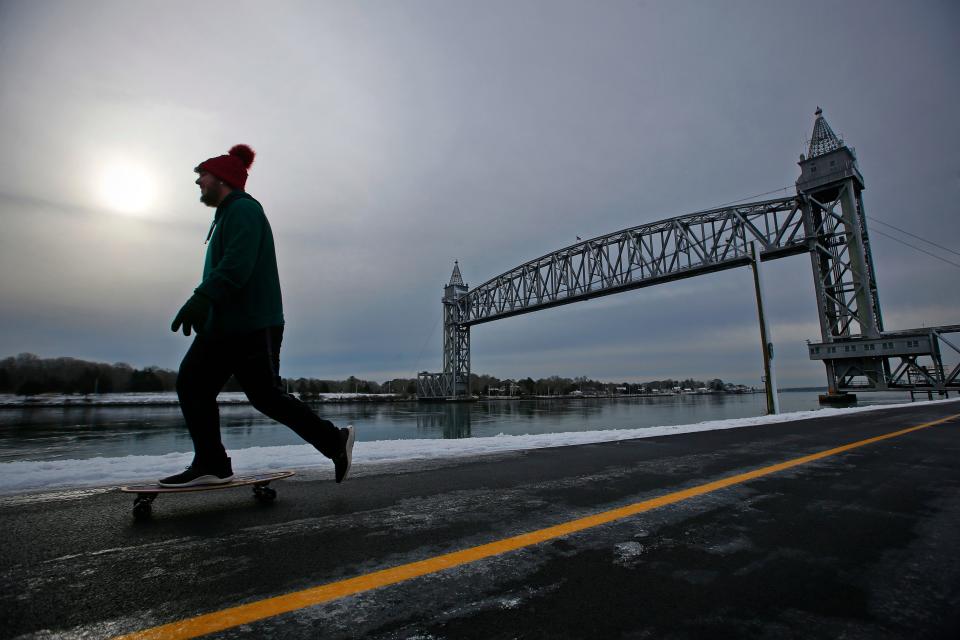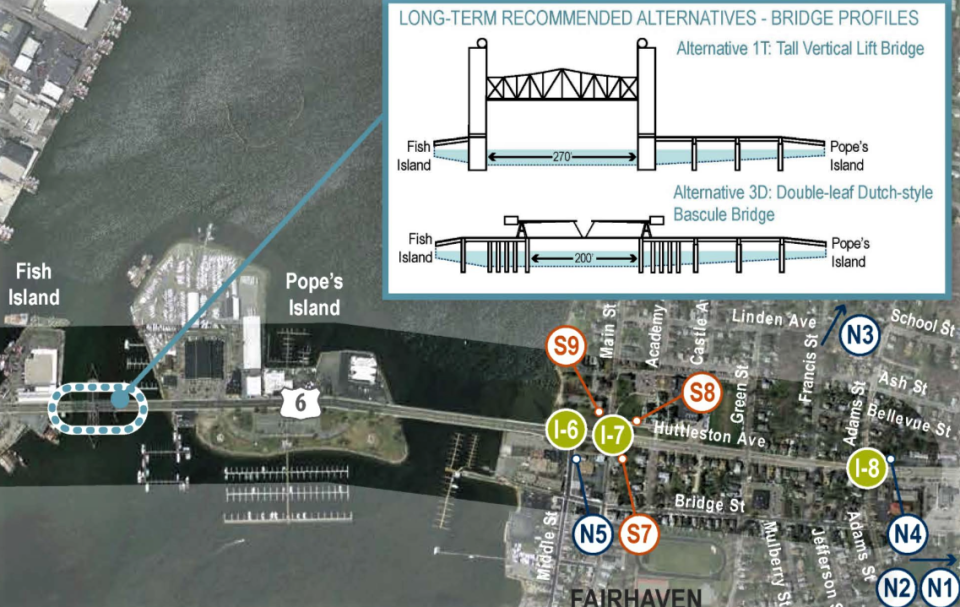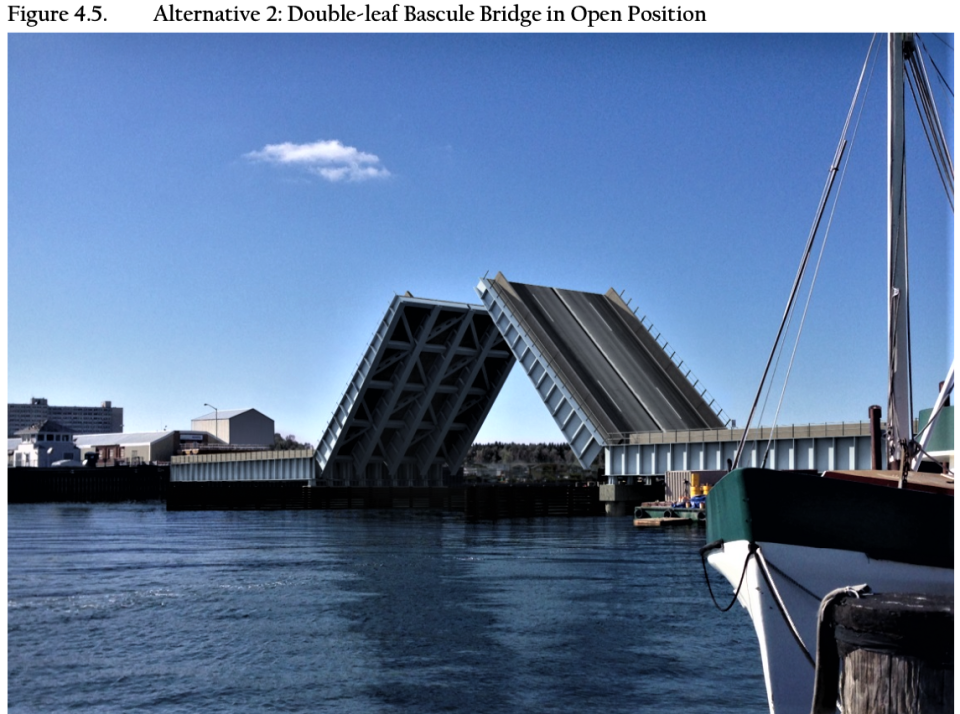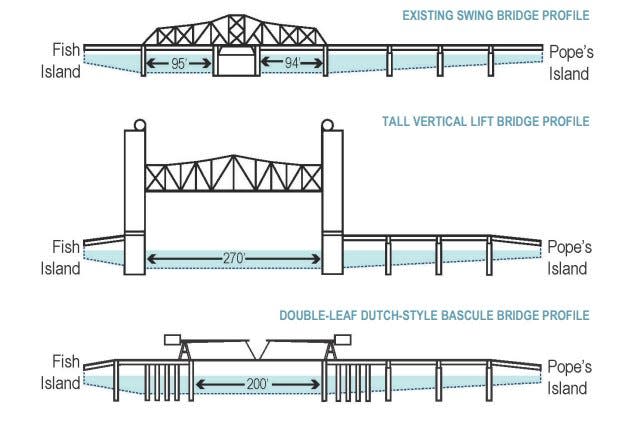Proposed 190-foot-tall New Bedford-Fairhaven Bridge may not be tall enough
NEW BEDFORD — The New Bedford-Fairhaven Bridge's proposed replacement features matching, 190-foot towers, yet city officials are concerned it poses a "height restriction" problem.
They say such a height restriction to passing vessels could inhibit future offshore wind industry development.
The current 121-year-old "swing bridge" to be replaced has no height restriction when opened to vessel traffic.
It swings open horizontally, and presents no ceiling to vessels.

The "vertical lift" bridge proposed by MassDOT will clear the way for passing vessels by raising the roadway straight up between the two towers.
It will have two elevation settings - one at 80 and one at 138 feet - that will be triggered depending on the height of the vessel that needs to pass underneath.
MassDOT says vertical lift bridge has widest channel
MassDOT officials said during a January presentation on the proposed vertical lift bridge's merits that it will provide an unobstructed 260-foot-wide channel for vessels to pass vs. the just-under-100-foot channels provided on each side of the current bridge when swung open.
MassDOT officials also say the vertical lift bridge will take less time to construct - meaning less disruption to vehicles and vessels - than other alternatives reviewed.

MassDOT officials are working on finalizing the new bridge's design in 25% installments with the goal of starting construction in 2027. They have also encouraged local input.
City officials expressed concerns with the height restriction to be created by the new design in a recent letter to MassDOT.
Lack of clearance could impede offshore wind
New Bedford is expected to continue to be a hub of offshore wind industry development "for the foreseeable future," stated city Planning Director Jennifer Carloni, and Port Executive Director Gordon Carr in the joint letter.
"Setting a height restriction might limit the competitive advantage of the New Bedford harbor in the offshore wind industry, which has clearance needs of well over 250-feet above the water."
They said that a Double-leaf Dutch Bascule Bridge - which is essentially a two-section draw bridge - was listed as a preferred alternative in a 2015, 467-page study on the New Bedford-Fairhaven Bridge Corridor.

Drawbridge-style design has no clearance problems
The study listed the vertical lift bridge and the Double-leaf Dutch Bascule Bridge as both being viable, long-term alternatives.
There would be no height restriction with the Bascule design.
The MassDOT presentation in January listed only the vertical lift bridge as the preferred alternative.
MassDOT officials say the vertical lift bridge will take one year to 18 months to construct vs. three to five years for other alternatives, minimizing traffic detour duration and impact to businesses on Fish and Popes Island.

City seeks clarification on design choice, collaboration
Carloni and Carr say in their letter they want to work with MassDOT and get clarification on why the vertical bridge alternative was chosen over the Double-leaf Dutch Bascule Bridge.
They also want to discuss "aesthetic considerations." Those are lacking in the current MassDOT plans, they say.
"We believe the bridge should be designed with such care and thoughtfulness that it brings pride to its residents."
They're also requesting that a "working group" be established with MassDOT's bridge team that would include New Bedford, Fairhaven, and Port of New Bedford staff.
"This collaborative approach is the best way to achieve the project's goals," they said.
This article originally appeared on Standard-Times: Proposed 190-foot-tall New Bedford-Fairhaven Bridge may lack clearance

